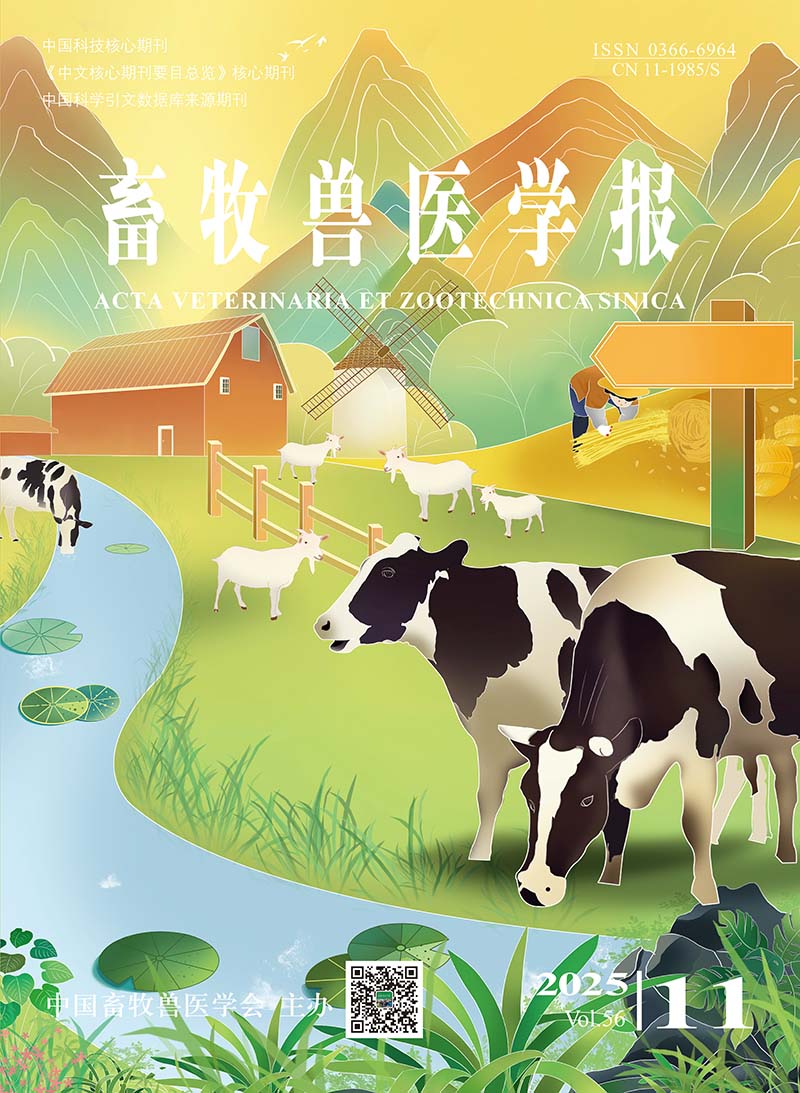-
The Current Status of the Drug Resistance and Evolutionary Relationship of MSSA and MRSA Isolates from Bovine of China
-
WANG Dengfeng;DUAN Xinhua;WU Jianyong;YANG Xueyun;LI Jianjun;LI Na;WANG Zhicai
-
2011, 42(10):
1416-1425.
doi:
-
 Abstract
(
455 )
Abstract
(
455 )
 PDF (2054KB)
(
586
)
PDF (2054KB)
(
586
)
-
Related Articles |
Metrics
The aim of this study was to investigate the current status of the antimicrobial resistance of bovine Staphylococcus aureus isolates, so as to do research on carried drugresistant genes and molecular epidemiology profiles of methicillinsusceptibility Staphylococcus aureus(MSSA)and methicillinresistant Staphylococcus aureus(MRSA)which isolated from bovine, further, to reveal the evolutionary relationship between MSSA and MRSA, and origin and diffusion of MRSA. Total 54 isolates which isolated from Xinjiang, Zhejiang, Shandong, Neimenggu and Shanghai in 2009 were investigated antibiotics susceptibility by disc diffusion method, and 12 isolates of MSSA and MRSA which confirmed by Cefoxitin sensitive test by disc diffusion method and mecA PCR were used to detected the antimicrobial resistance genes and typed by multilocus sequence typing (MLST). Drug sensitive test results showed that 88.8% isolates resisted to erythromycin, 81.5% to clindamycin, 88.9% to penicillin, 90.7% to ulfamethoxazole compound, 92.6% to doxycycline, 94.4% to tetracycline, 79.6% to chloramphenicol, 63.0% to ciprofloxacin, 70.4% to gentamicin. Besides that, 5.6% isolates resisted to all 10 antibiotics, 85.2% isolates resisted to more than 5 antibiotics, 6 isolates (11.1%) resisted to cefoxitin. Furthermore, 3 MRSA isolates resisted to 10 antibiotics, Xinjiang MSSA isolates resisted to 24 antibiotics, other provinces MSSA isolates resisted to 7 antibiotics, and analyzed result of the antimicrobial resistance gene of MSSA and MRSA, found all isolates carried ermC and tetK genes, but no ermA gene, 6 MRSA isolates carried aac(6′)/aph(2″), 5 and 4 MRSA isolates carried tetM and aph(3′) Ⅲ respectively, but only 4 MSSA isolates carried tetM gene, no MSSA isolates carried aac(6′)/aph(2″) and aph(3′)Ⅲ. Staphylococcal chromosomal cassette (SCC) mec of MRSA was typed by multiPCR, the results showed that 5 isolates were SCCmec IV and 1 isolate can not identificated type. The MLST results of MSSA and MRSA proved that the isolates belonged to ST50, ST965,ST6,ST97 and ST9, further analysis found that 6 MRSA isolates distributed in CC7,CC4,CC21 and CC9 and MSSA isolates distributed in CC32 and CC7. The results suggest that drug resistance of Chinese bovine Staphylococcus aureus isolates are serious and most isolates represent multidrug resistance, MSSA and MRSA are multidrugresistant strains and carries more than 2 antimicrobial resistance genes, epidemical bovine MRSA is MRSASCCmec IV. By analyzing the results of MLST and comparing with MLST results of human MRSA, found that, in China, bovine MRSA was different with human’s and speculated that bovine MRSA emerged when MSSA which belonged to different CCs gained SCCmec IV by antibiotic selection, in addition, MRSA stains isolated from different areas were not the same ancestor, further analysis, presume those genes similar to plasmid or transposon can free communication in different isolates than depend on SCCmec.






